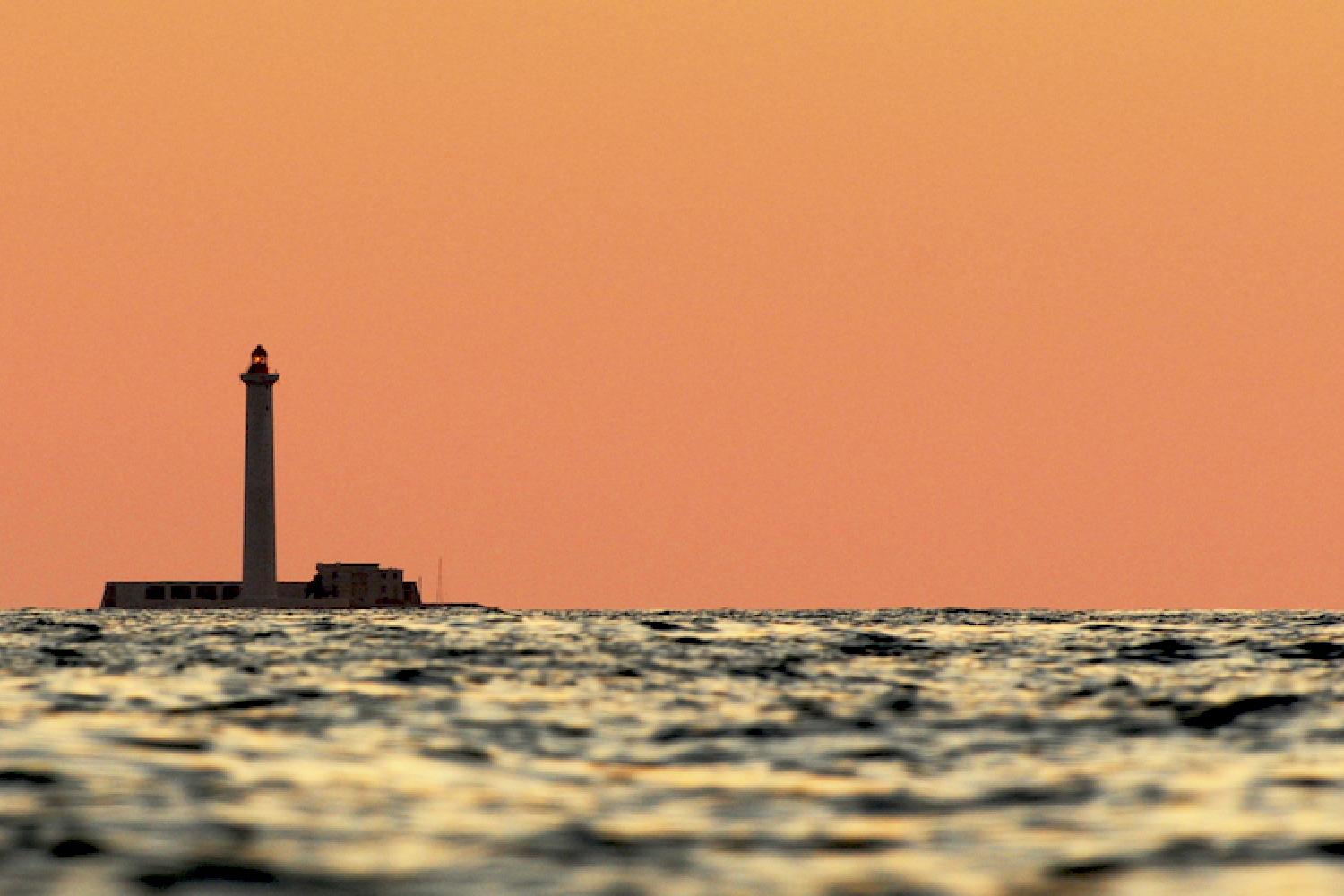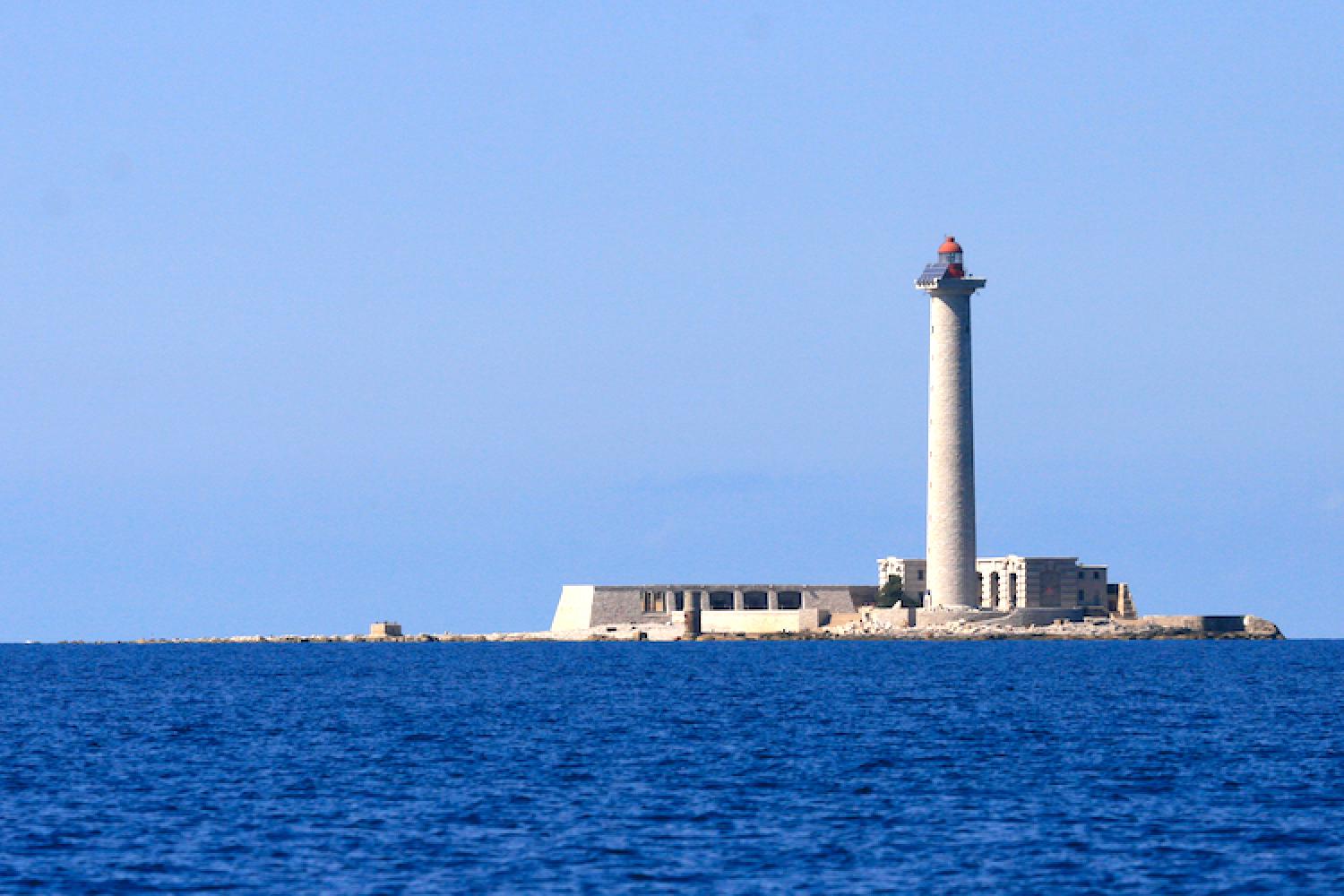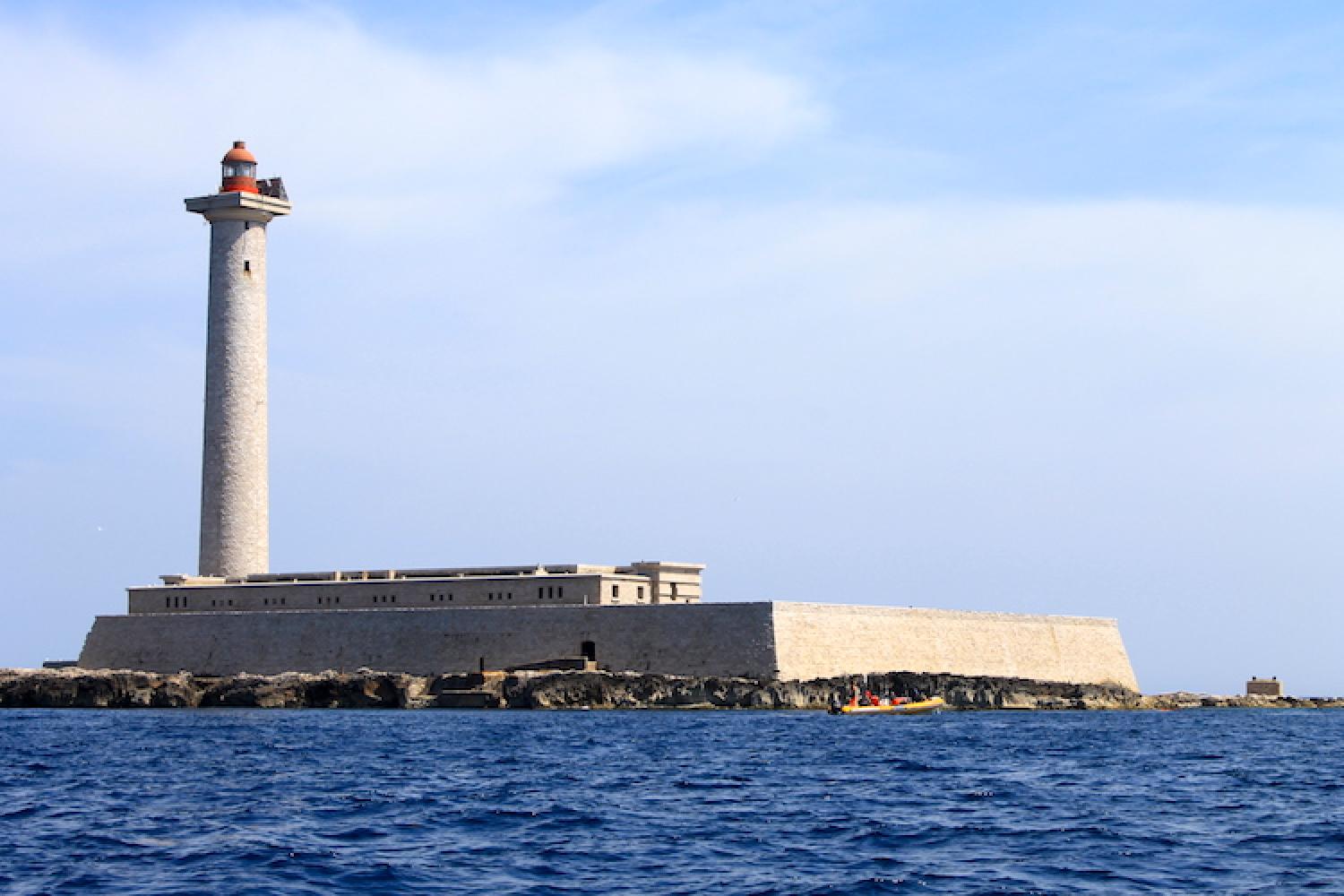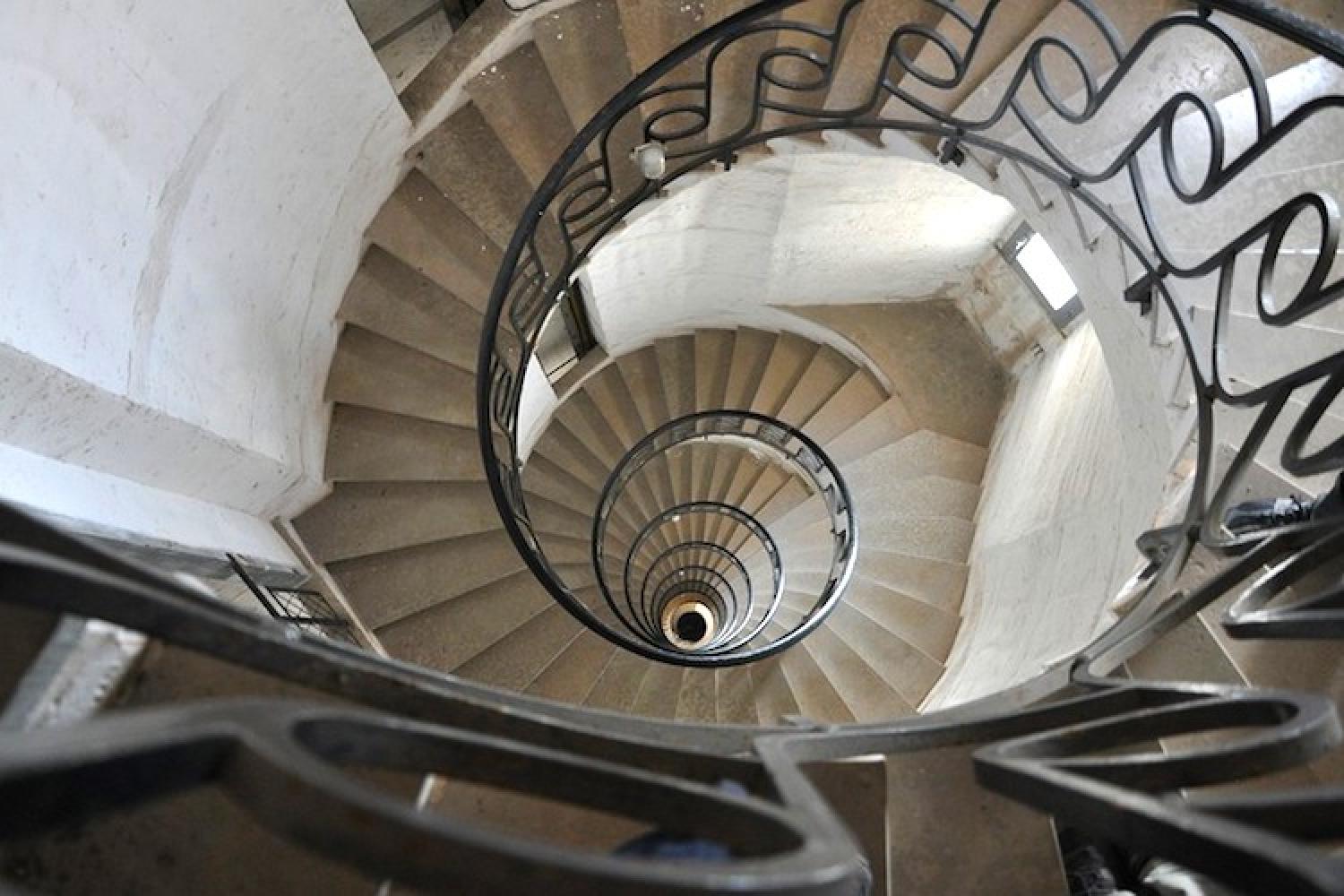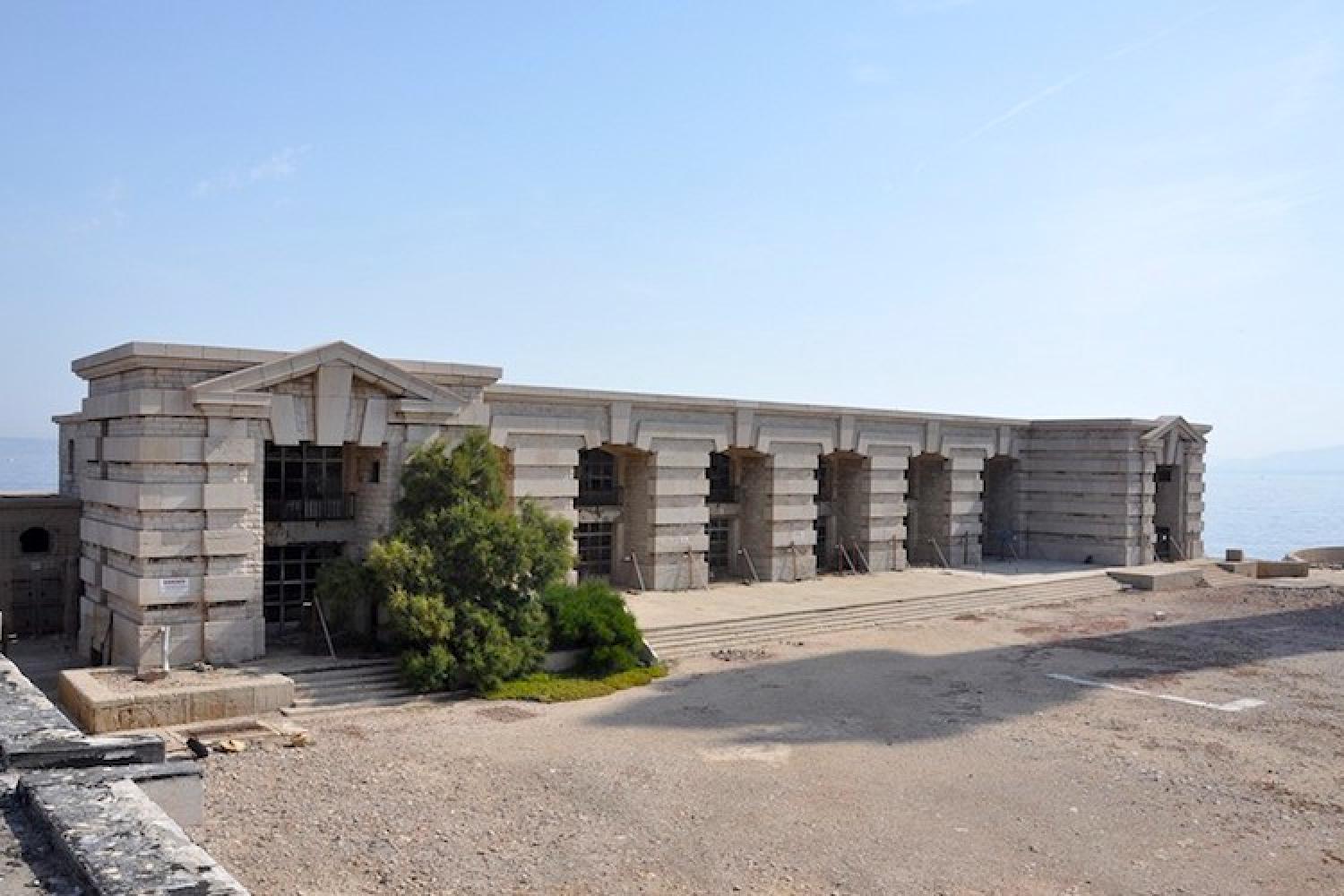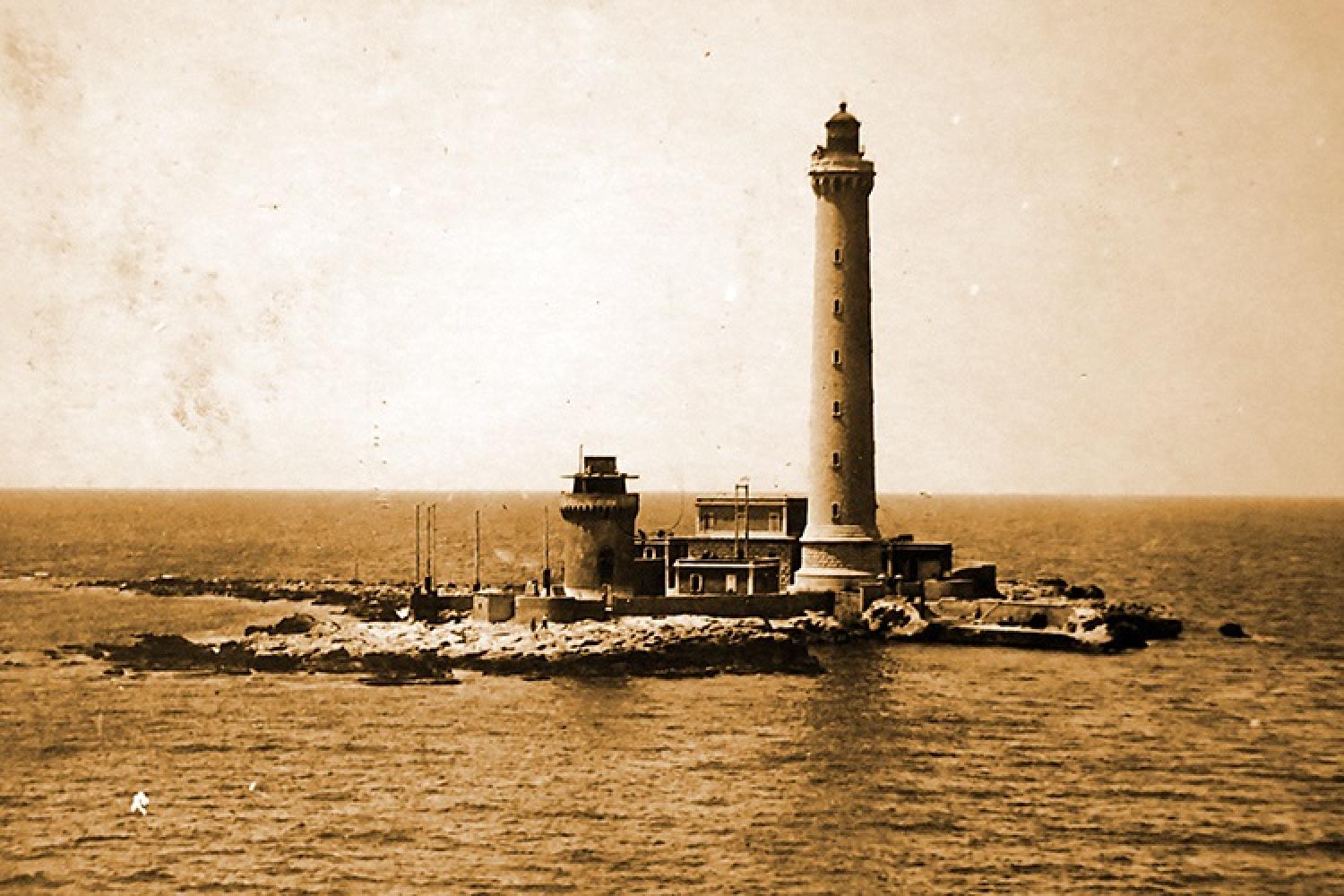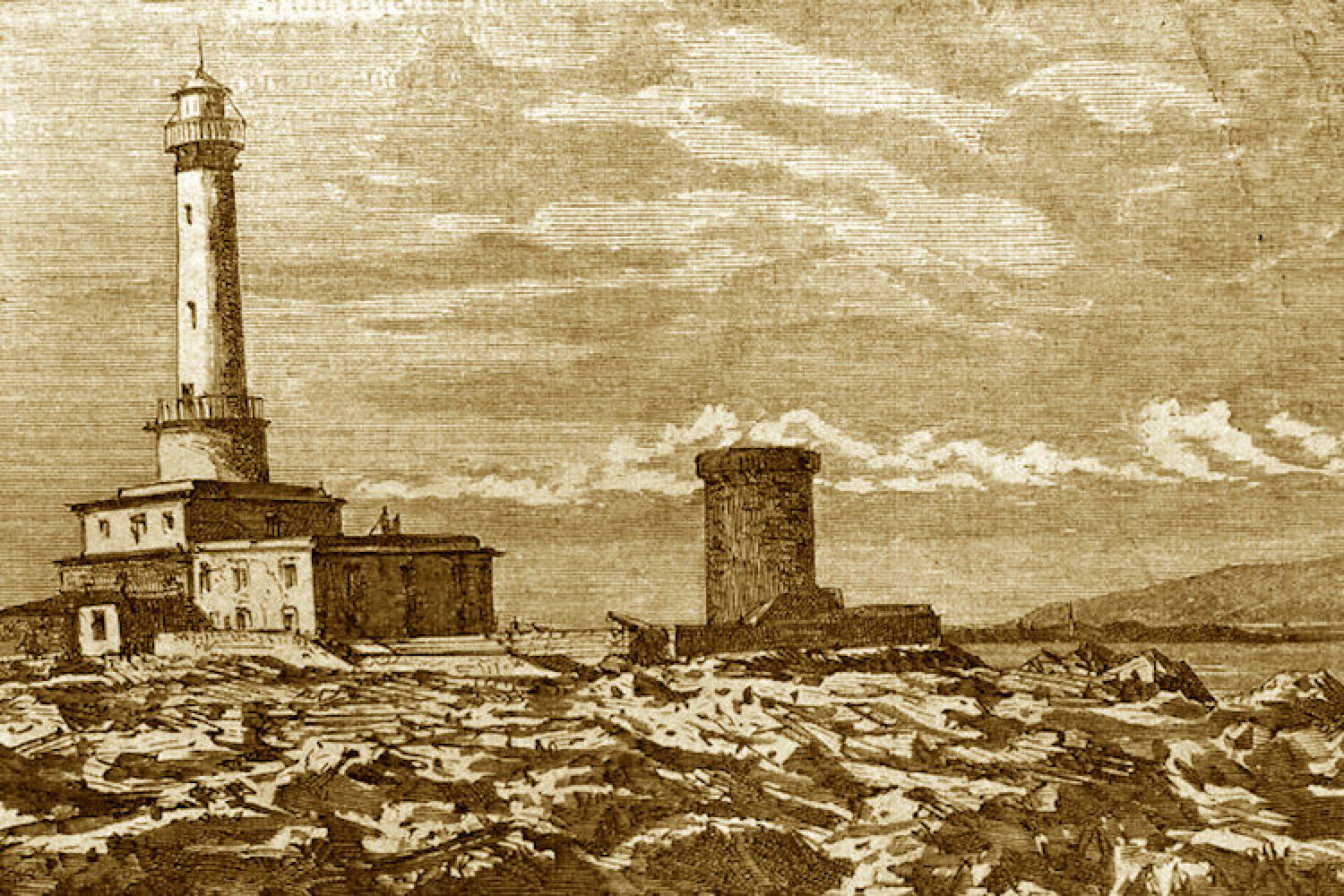The lighthouse island
An island beaten by the waves
An important symbol of the marine nature of the Calanques National Park, the lighthouse is in the harbour of Marseille, about 9 kilometres from Cap Croisette. Named after its flat topography, it is the vertical form of the lighthouse that makes it a major landmark in the Phocaean marine landscape.
The superb seabed surrounding the island is protected by its no-take zone status. The reefs have been fatal to many ships, proven by the wrecks that make this a famous diving spot. They include boats such as Chaouen and the Dalton (one of the first wrecks filmed by Cousteau), and military planes dating back to the Second World War.
The guards, who worked in pairs until 1992, had a bread oven and bred hens and rabbits to ensure their subsistence. After their departure when the lighthouse was automated, a diving centre was created on Planier, then closed in 2004. The site is now managed by the lighthouse and beacon service and is no longer inhabited.
The tallest lighthouse in the Mediterranean
The current lighthouse was built between 1947 and 1959. The monumental site consists of several buildings. The highlight is the 72-metre column-tower with 362 steps! In concrete, with mortar made using sand from Riou, it is embellished with Cassis stone. The lighthouse was first listed as twentieth-century heritage on 1 March 2001, then registered as a historical monument on 2 September 2002, the lighthouse was listed on 13 September 2012. The tallest lighthouse in the Mediterranean, it is also the only one that is both active and a listed historical monument on the French Mediterranean coast.
From the outset, Planier was one of the most important Mediterranean lighthouses. It has seen many different historical periods, evolving from coal to oil lighting to photoelectric cells as the tower increased in height. The first lighthouse was built on the island in the Middle Ages: the first dates back to 1326 and measured 12 metres; the second was built in 1774; and the third was completed in 1829, reaching 59 metres. The current lighthouse is the fifth, replacing the fourth, built in 1881 and destroyed by the Germans in August 1944.
An evocative edifice
The first and last contact with the Phocean city and France for voyagers and migrants, Planier has a special place in the heart of Marseille locals, sailors, and writers.
Alexandre Dumas mentions it in his travel writing, but most importantly in The Count of Monte-Cristo where Edmond Dantès sees the lighthouse "shining like a star". In Naïs Micoulin, Zola describes it: "the rotating Planier lighthouse returns every minute, piercing the darkness with its yellow rays, then disappearing suddenly. There is nothing more gentle or tender than this light, incessantly lost on the horizon, then returning over and again". It was mentioned by Alphonse Daudet, Blaise Cendrars, and Joseph Conrad. But the most beautiful mention is undoubtedly by Albert Londres in his report, Porte du Sud:
"The lighthouse is two miles from the coast. Every evening, its light sweeps over the open sea and the shore. This lighthouse is famous around the world. It is called Planier. Regardless of when you observe it, remember that at that moment it is a subject of conversation on all seas and under all constellations. When it is not a subject of conversation, it is thought about. Planier guides us home, but it also watches over departures. Make the trip to Marseille, young people of France, where you will see the lighthouse. It shows a great path that you probably can not imagine. Perhaps then you will understand."
Albert Londres
Did you know?
The lighthouse emits a white flashing light every 5 seconds. With optical lenses arranged around a single 150-watt bulb, its light is seen 23 miles away - that's about 42 kilometres.
Regulations
The lighthouse is not open to visitors. For safety reasons, landing on the island is against the law. Boating and diving in the area is authorised. Planier is in a no-take zone, so fishing is against the law. Read about good conduct and regulations for the sea here.
Localisation
GPS coordinates: 43.198754, 5.229791
 Links
Links
La fiche consacrée au phare de Planier sur le site du Ministère de la Culture
Avec les veilleurs du Phare de Planier, une histoire de La Marseillaise
Planier, l’île oubliée, un reportage de Marsactu
Le phare de Planier dans la revue Marseille
Marseille, ville-monde sur France Culture, où l’on parle notamment de Planier




